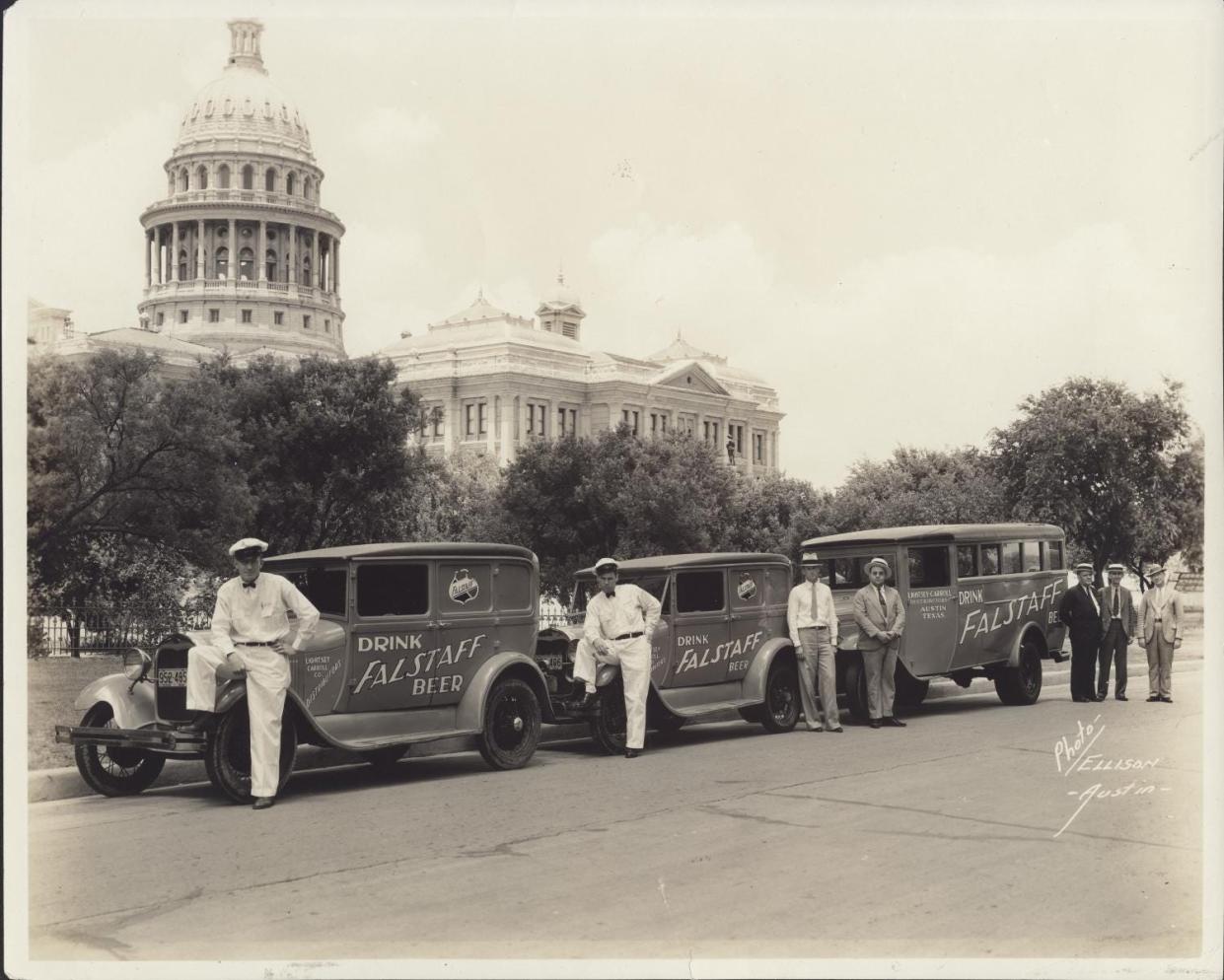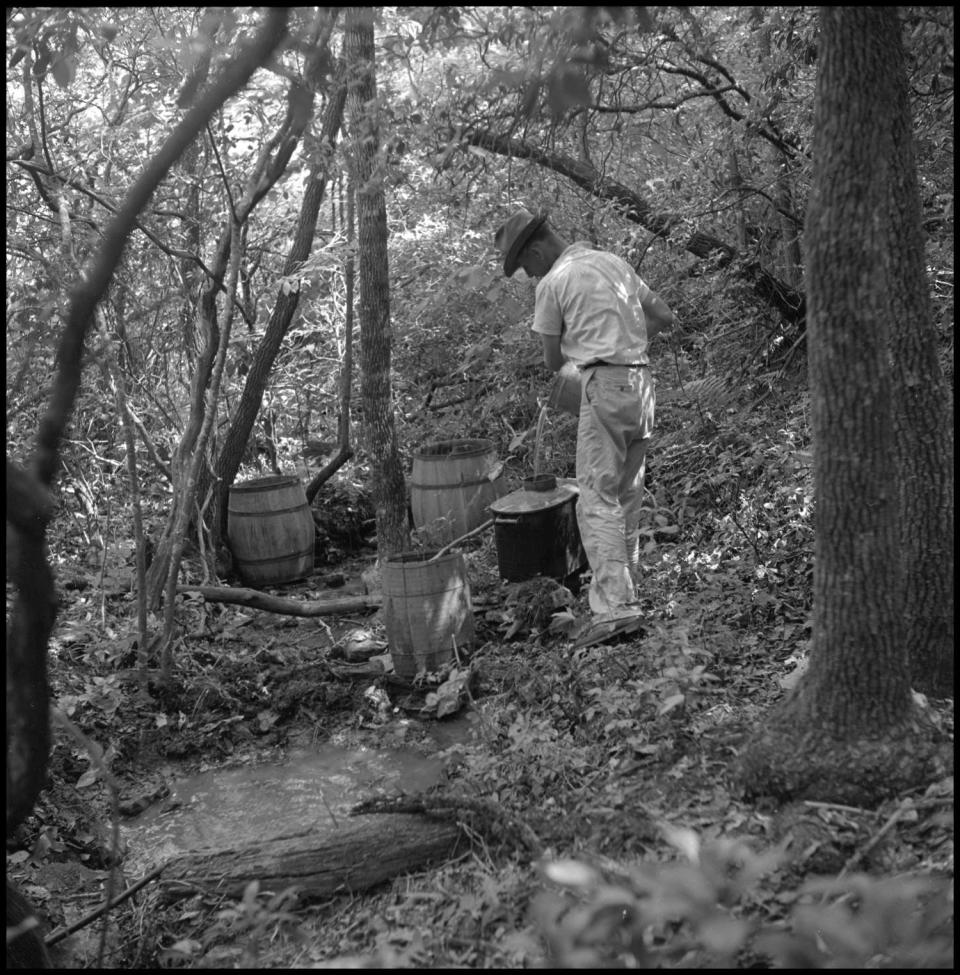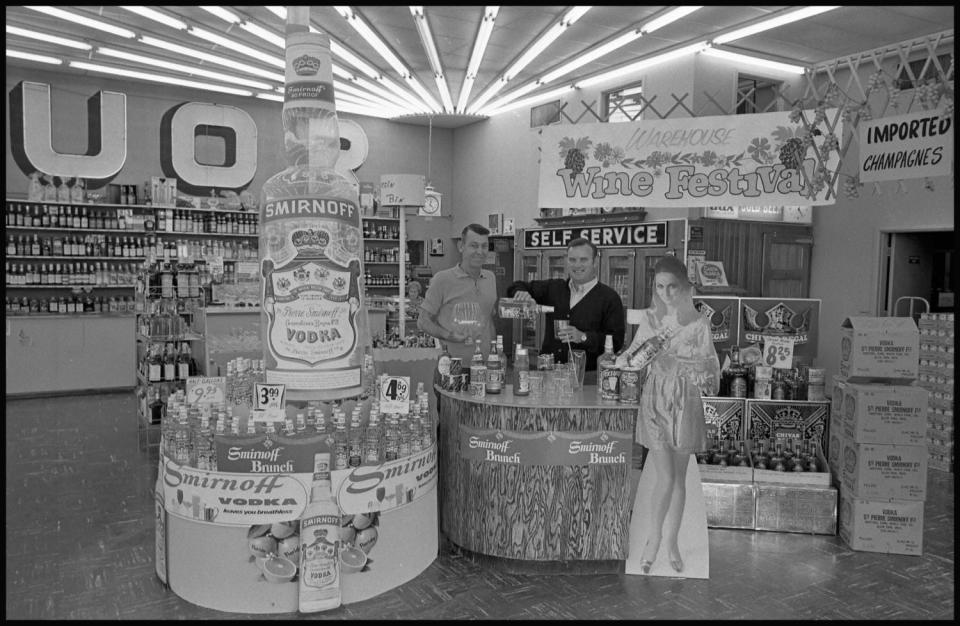"The evil of liquor-by-the-drink": Texans remember the Texas Prohibition political, cultural fight

It's hard to imagine, but my mother, Elizabeth Anne Keating Barnes, 94, lived through the American Prohibition.
Moonshiners, bootleggers, gangsters, speakeasies, flappers, jazz babies, bathtub gin and all that.
Not that she heeded the national ban on alcohol while growing up in San Antonio, El Paso and Austin. After all, she was only 5 years old when the 18th Amendment to the U.S. Constitution was repealed in 1933.
As recounted in a recent Think, Texas column, I lived through the extended Texas Prohibition, which continued to outlaw public cocktail service in the state until 1971.
At the time, I noticed the policy change because, to a budding student of history and human behavior in his junior year of high school, it was clear that something significant had happened.
Adults, like former state Sen. Joe Christie (D-El Paso, 1967-73), who engineered the passage of liquor-by-the-drink, otherwise known as cocktails and shots, through the Texas Legislature, paid even even closer attention.
Fiery Baptist preachers, always a force in Texas, vigorously opposed his efforts. The Texas Restaurant Association and its members were Christie's most effective supporters and organizers.
"Keep in mind the big issue for evangelicals back then was not guns, abortion, transgender (rights) or immigration, it was the evil of liquor-by-the-drink," Christie told the American-Statesman earlier this year. "And I was the devil’s messenger."
Other adults were paying attention, too, during the late 1960s and early 1970s.
After my April 17 column was published, they shared their memories, as well as cultural tales from the times.
The politics of the Texas Prohibition
Before liquor-by-the-drink, in 1968, San Antonio, and, by extension, Texas, boldly asserted its place among global cities by staging a world's fair.
Or rather, a half-world's fair, called HemisFair '68, meant to unite the countries of the Western Hemisphere. The giant project obliterated parts of some older neighborhoods near the San Antonio River, but left behind such landmarks as the Tower of the Americas and the Institute of Texan Culture, formerly the Texas State Exhibits Pavilion.
"I was an executive at HemisFair ’68," says John Watson, a retired lawyer living in the Hill Country, who joined the project after the controversial demolitions, "and we worked mightily to get liquor-by-the drink passed before the scheduled opening in April 1968. Gov. John Connally, who was a big supporter of HemisFair, was fully behind the effort. Obviously we failed in that endeavor; there were several 'private' clubs on fairgrounds and many places to buy beer."
According to Watson, it was commonly believed that the Texas beer industry covertly opposed legally served cocktails.
"Whether true or not, I knew the lobbyist for the beer industry and he was an influential and powerful force at the legislature," Watson says. "At any rate, ending the ban on mixed drinks took a long and herculean effort."
More: Visiting shrines, missions, presidios, vaults and other hallowed places in South Texas
Lobbyist Jim Sewell got his first taste of politics and marketing in the fight for a state constitutional amendment to allow "open saloons," which voters had to approve before the liquor-by-the-drink bill could be passed. A photograph of him was even featured in a pro-cocktail promotional display, or rather, the back of his head was.
"I was a student at UT Austin when Paul Tracey — former editor of the Statesman — asked if anyone in his class needed a part time job," Sewell remembers. "I quickly raised my hand and was hired as a gofer at Christian, Miller and Honts (the pro-cocktails public relations firm)."
"One of the marketing items was a table tent display showing a very attractive lady seated across from a man sipping a cocktail. That was the back of my head, which became the piece which the restaurants used on their tables."
Sewell also went on a few trips with former Travis County Commissioner Bob Honts, who spoke to local leaders around the state about the amount of tax and tourism dollars their cities could expect.
"I ran the multimedia presentation while he spoke," he says. "The multimedia was three slide projectors. Little did I know at the time what that part-time job would do to change my life."
More: Alcohol-to-go becomes legal in Texas. How much booze can you buy from bars and restaurants?
Gaylord Armstrong, a partner at Partner at McGinnis Lochridge & Kilgore law firm, was three years out of law school and in his second session of lobbying in 1971. He witnessed first-hand the larger-than-life political characters who clashed during the four-year battle for liquor by the drink.
"I remember those legislative and political battles very clearly," Armstrong says. "I had been drafted to travel with then Lt. Gov. Ben Barnes in his campaign for governor and got to know the members of the Texas Senate and most of the members of the House. You describe the key players in those battles, the issues and the proponents and opponents very accurately."
Car dealership owner, Bryan Hardeman, who also serves on the board of the Austin History Center Association, recalls the wisdom of his father, state Sen. Dorsey B. Hardeman.
"My dad served in the senate from 1947 to 1969 with Christie Wilson and Oscar Mauzy," Hardeman says. "My dad was known as the 'Lion of the Senate' and his office is right behind the chamber, where the Lieutenant Governor's dining room is today."
"After passing liquor by the drink and lowering the drinking age to 18 — and then raising it to 21 — he famously said they had it backwards: Every 18-year-old knew all about drinking and nothing about voting. They should raise the voting age to about 25."

Personal stories about the Texas Prohibition
In 1968, Lakeway resident Jim Challstrom celebrated his 21st birthday in a restaurant. He remembers the "private club" workaround during the Texas Prohibition.
"The waitress told me if I paid a dollar to join their private club for 24 hours I could get a cocktail," he recalls. "Funny how billions of extra tax dollars can oil up the most conservative politicians!"
Craig Roberts turned 18 in Houston in 1968, but too busy doing other things to worry about the details of Texas liquor laws. Nevertheless, was attuned to another political current of the times — LBGTQ rights — often organized at the city's gay bars in the Montrose neighborhood.
More: Demolition plans could displace about half of Austin's LGBTQ bars. Here's what to know.
"I appreciate learning about Heights vs Montrose," Roberts says, referring to report in my earlier column that the Heights was "dry" while Montrose was "wet." "I never was in a gay bar in Montrose but my photo was with Kathy Whitmire’s in the 1977 elections, as I ran for the Houston school board when she won the mayor’s office. We were both endorsed by Ray Hill and the Gay Political Caucus. . . . Oh, the GPC gave me $1,000."
Nonprofit leader Max Woodfin was working as a summer intern in Jim Lehrer's show, "Newsroom," on KERA public TV in Dallas in 1971 when cocktails were first legally served.
"Jim assigned Mike Ritchey, Greg Roberson and me to be among the first in Dallas to legally imbibe," Woodfin says. "We probably made more phone calls for that story than any other we worked on that summer, trying to find restaurants that had their licenses and would be serving.
"We were delighted to find that Campisi's Egyptian on Mockingbird Lane — still my favorite pizza in the world! — would be serving. We were there when they opened the doors. Jim advised us to stay sober enough to report about the experience when we went on the air at 6:30 that night. My choice was Scotch and water."

Actual houses divided by liquor-by-the-drink vote
Ron Calhoun majored in journalism and minored in history at Texas Tech University before becoming a political writer for the now defunct Dallas Times Herald from 1968 to 1980. He recalls the days "when the Texas Legislature was a totally different animal, even fun sometimes."
He also recalls the fight against Texas Prohibition, and the three entertaining senatorial allies — Joe Christie, Oscar Mauzy and Charlie Wilson — who teamed up to end it. He shared some insights into the voting for "wet" or "dry" zones by Justice of the Peace precincts, one of the oddest remnants of the Texas Prohibition era.
"I think it was in 1973 that Dallas had a liquor-by-the-drink election within the confines of where liquor stores and beer service were long established, including downtown Dallas, old JP Precinct 1, which actually no longer existed," Calhoun says. "Old maps were used to determine where potential voters resided, including a portion of North Dallas, north of Northwest Highway, which was lightly settled when old JP Precinct 1 was around.
"Since then, many new homes were built there and, alas, the old line went through some of them," he continues. "That caused a voter eligibility problem finally resolved when a judge ruled that if the master bedroom was within the line, the residents of the home were eligible to vote."
Michael Barnes writes about the people, places, culture and history of Austin and Texas. He can be reached at mbarnes@gannett.com. Subscribe to the free weekly digital newsletter, Think, Texas, at statesman.com/newsletters, or the newsletter page of your local USA Today Network paper.
Correction: In an earlier version of this post, John Watson was identified as an architect living in Austin. He is a retired lawyer living in the Hill Country.
This article originally appeared on Austin American-Statesman: Tales and cocktails flowed after the end of the Texas Prohibition

